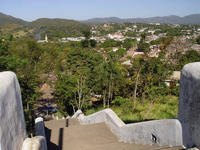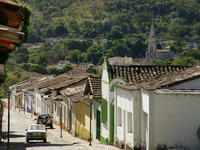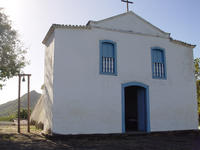You are in: South America -> Brazil -> Historic Centre of t... , and traditional search or Image Gallery will yield results of this site only
Historic Centre of the Town of Goiás
| Site number: | 993 |
|
| Type of site: | Cultural | |
| Date: | 18th-19th c. | |
| Date of Inscription: | 2001 | |
| Location: | South America, Brazil, State of Goiás | |
Up to 75 images are shown here. Click on each for more details or on Image Gallery for more images.
| Description: | Goiás testifies to the 18th and 19th century occupation and colonization of central Brazil. Adapting to the conditions of the site, the mining town organically developed into its current urban layout. The modest public and private architecture that shapes the town’s harmonious whole was coherently constructed with the use of local materials and vernacular techniques. --WHMNet paraphrase from the description at WHC Site, where additional information is available. | |
| Goiás (also known as Goiás Velho, Old Goiás) is a small city and municipality in the state of Goiás in Brazil. The population was 26,705 (2005 projection) in a total area of 3,108.0 km² (2002). It is the former capital of the state and preserves much of its colonial heritage. In 2002, it became a UNESCO World Heritage Site. It was the old state capital of Goiás until 1937, when the government seat was transferred to the recently built Goiânia. It was founded by the famed Bandeirante explorer Bartolomeu Bueno da Silva, nicknamed Anhangüera, and was called in colonial times Vila Boa de Goyaz ("good village of Goias" in archaic Portuguese). Given its historical importance, the historical center of Goiás was included on UNESCO's World Heritage list in 2001. Goiás Velho was founded in 1727, its name being a tribute to the Goyaz Indians, the inhabitants of the area before the arrival of the Europeans. Its houses, chapels and churches are testimony to the height of the gold rush era. The history of the town, which is intertwined with the history of Goiás state, and certain reminders of the wealth of past centuries carved in gold, can be seen in places such as the Museu das Bandeiras, built in 1761; the Colégio Sant'Ana, founded in 1879 by Dominican friars; the church of Nossa Senhora d'Abadia, constructed in 1790, with its altar painted in blue and gold; and the Casa da Fundição, dating from 1752, where the gold from the mines was cast. --Wikipedia. Text is available under the Creative Commons Attribution-ShareAlike License. | ||
| Source: | http://whc.unesco.org/en/list/993 | |
| Reference: | 1. UNESCO World Heritage Center, Site Page. | |

















